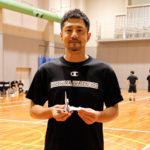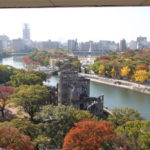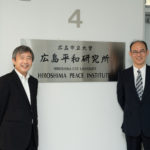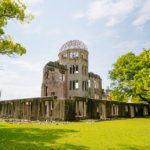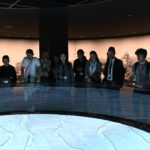I Hiroshima: the Path to Becoming a Military City
1 Hiroshima: the Military City
The start of Hiroshima’s development as a military city can be traced back to the reform of the military system that took place during the Meiji Restoration. In 1871, four garrisonsTokyo, Osaka, Chinzei (Kyushu), and Tohokuwere established, and the First Outpost of the Chinzei Garrison was set up in Hiroshima. In 1873, the distribution of garrisons was revised. The country was divided into six military districts, and the Hiroshima Garrison of the Fifth Military District was established (besides Hiroshima, other garrisons were set up in Tokyo, Sendai, Nagoya, Osaka, and Kumamoto). After this, with an Imperial ordinance on division headquarters announced in 1888, the Hiroshima Garrison was disbanded, and the Fifth Division Headquarters was established. So, Hiroshima took its place as a military base with jurisdiction over the Chugoku and Shikoku regions. When the First Sino-Japanese War broke out in 1894, the city’s importance as a base for dispatching troops and for military logistics suddenly came into focus.
The Fifth Division was ordered to mobilize in preparation for the First Sino-Japanese War. On June 9 1894, the First Battalion of the 11th Infantry Regiment departed from Ujina Port. This was the same year that the Sanyo Railroad opened a new route to Hiroshima. When the railroad was connected to Ujina Port in 1889, Hiroshima became the perfect location for dispatching troops to the Korean Peninsula and to Chinese mainland. The Ujina Line, which connected Hiroshima Station to Ujina Port, was completed just in time for the war in a rushed construction project that took slightly more than two weeks. With the start of the war, divisions, from Hiroshima eastward, gathered in the city in succession and departed from Ujina Port. The officers and soldiers stayed in Hiroshima City and its suburbs before their departure. The number of men who passed through Hiroshima, including gunpu (laborers employed by military for transport and supply work), was 171,098. Sometimes these men stayed in the city for only a few days, and other times their stays lasted tens of days. On September 8, it was announced that the Imperial Headquarters would move to Hiroshima, and the Meiji Emperor arrived on September 15. The Imperial Diet was held in Hiroshima and many high officials also arrived, and the city took on the appearance of a provisional capital.
In response to the war, as a base for troop dispatch and military logistics, Hiroshima planned the expansion of military facilities. First, in preparation for the reception of returning units, the Ninoshima Temporary Army Quarantine Station was opened in June 1895. The following year, construction of Hiroshima’s waterworks for military use began (completed in August 1898). Construction of waterworks for drinking water was not only for the provision of tap water to army ships, but it was also necessary as a countermeasure against the spread of infectious diseases. (Upon receiving returning units after the First Sino-Japanese War, Hiroshima became rife with cholera. In 1895, 1,302 people died of cholera in Hiroshima City.) The Ministry of the Army emphasized the importance of Hiroshima’s waterworks for military use with the following statement:1)
The importance of Hiroshima City in Hiroshima Prefecture, along with Ujina Port, as a strategic base for military activities is a matter that needs little discussion. However, the drinking water in this city is unhygienic and has become a vector for communicable diseases time and time again. The danger this has posed to our troops is not small. For this reason, even though the conditions of this area (together with the port) are extremely favorable, we will not be able to make full use of them unless water-piping is laid out to fix the lack of a hygienic water supply problem. It will be impossible to station entire units upon the dispatching and returning of troops… It is necessary to promptly begin construction of water-piping in the city and to complete it as soon as possible to make Hiroshima a safe strategic base. In addition, a long-term plan to make cluster of warehouses at Ujina Port is also necessary…
Waterworks construction was a pending issue for the City of Hiroshima, too, but provision of tap water to citizens was made possible by allowing them to tap into the military waterworks facilities.
Transportation functions of Ujina Port, put into full operation during the war, did not lose their significance, as military troops were placed in newly acquired colonies after the war. In March 1896, the Ujina branch of the Temporary Army Transport and Communications Department was established. This later became the Army Transport Department. Because of Ujina’s role, a provisions depot, a clothing depot, and an ordnance supply depot were set up in Hiroshima. Also, a local military preparatory school was established (opened in 1897, closed in 1928, re-opened in 1936).
One characteristic of Hiroshima’s role as the military capital is that it was highly visible during times of war due to its role in dispatching troops. Hiroshima became a staging point and was flooded with people and goods in anticipation of wartime economic activity, first during the Boxer Rebellion of 1900, and then for the Russo-Japanese War from 1904 to 1905. The prosperity of Ujina area was especially astonishing with a pre-war population of 3,200 that swelled to 9,000 after the war started. Some estimates say that in addition to this, the number of laborers engaged in military transport work at the time reached 3,000. The area bustled, boasting over 100 eating and drinking places, around 30 restaurants, 80 inns and guesthouses, more than 300 rickshaw operators, over 40 brothels, and over 200 prostitutes. Hiroshima’s role continued to grow after the Manchurian Incident, and as the conflicts in the Second Sino-Japanese War and the Pacific War escalated.
2 From the Manchurian Incident to the Second Sino-Japanese War
In September 1931, after an explosion on the South Manchurian Railway (a plot by the Kwantung Army), the military ordered the invasion of Manchuria (Northeastern China) to begin (the Manchurian Incident). China brought the case before the League of Nations and the international community blamed Japan for the incident. However, having been persuaded by newspaper reports and military campaigns, the Japanese people, almost unanimously leaned toward supporting the war. On September 26, the Hiroshima City Branch of the Imperial Reserve Association and the Chugoku Shimbun (newspaper) Company sponsored a large lecture presentation on military activities. On November 3, representatives from neighborhood associations in the City of Hiroshima held the “Current Affairs Citizens Rally” at Hijiyama Gobenden Square. Hiroshima, which had just regained its role as a military capital, was bustling with activity as it sent reinforcements to the Chinese mainland from Ujina Port. On November 17, when the Eighth Division departed from Ujina Port, 100,000 people came to see the troops off. On December 21, a send-off ceremony, marking the deployment of the Fifth Division (Hiroshima’s local division) reached a fever pitchwith over 130,000 people turning out in the Ujina area.
In July 1937, Japan rushed into full-scale war with China. The government decided on sending reinforcements by dispatching three divisions from Japan. The Fifth Division was also ordered to mobilize. With this large movement of troops, starting on August 1, draftees received a grand send-off and left in droves for the frontline in northern China from Ujina Port.
The Japanese military forces were overwhelmingly dominant in the early stages of the Second Sino-Japanese War. However, persistent resistance from the Chinese side caused the fighting to become unexpectedly bitter and a great number of soldiers lost their lives. As early as the end of August, newspapers came to be filled with articles beautifying and dramatizing the words of dead soldiers’ bereaved families, including headlines such as: “he was summoned by the Emperor,” “he was willing to die,” “it was his dream,” “they spoke calmly about it,” and “we were prepared for his death.” 2)
I’m sorry he had to die. But, I don’t regret that he was summoned by the Emperor and died an honorable death in battle….
I have already prepared for this possibility. It is a blessing that someone like my son was able to serve the Emperor….
On October 2, the first remains of soldiers of the Fifth Division arrived at Hiroshima Station, and from around this time until throughout the end of the year, official notices of the deaths in battle were delivered to families in nearly every town and village. When the remains of the war dead were returned to their hometowns, grand municipal funerals were held.
In answer for the increasing number of war dead, the Japanese military stormed major Chinese cities one after another. On December 13, Nanjing, the capital of the Chinese Nationalist Government, fell. In Hiroshima, 100,000 citizens celebrated this in a lantern parade, and the city was intoxicated with a sense of victory. Victory celebrations were held openly in anticipation of the end of the war, which nobody doubted after “the fall of Nanjing, the enemy capital.” However, Chinese resistance continued and the war did not come to an end. The Japanese military continued their attacks deep into the interior of the Chinese mainland and rushed into a lingering war.
In order to support a large-scale and long-lasting war, the establishment of a war regime economy was a necessity. In 1938, the National Mobilization Law was enacted and the government was given authority to control and mobilize all human and material resources in preparation for all-out war. Governmental control of the economy gradually strengthened by shifting industrial production towards military-driven demand, implementing new business regulations, rationing necessities, instituting price controls, and using labor controls (requisition). Necessities were strictly rationed and the people of Japan were forced to live in austerity.
3 Preparing for the Coming Decisive Battles on the Mainland
The Second Sino-Japanese War reached a state of quagmire. As opposition from the United States and Britain increased, the Japanese military started a war with the United States and Britain by landing on the Malay Peninsula and launching a surprise attack on Pearl Harbor, Hawaii, on December 8, 1941. With the start of the war, the prefecture, the city, and the Hiroshima prefectural branch of the Imperial Rule Assistance Association held a ceremony to pray for certain victory of the war against U.S. and Britain in front of Hiroshima Gokoku Shrine (a shrine dedicated to the homecoming of the war dead). At this ceremony, resolutions such as the following were decided: “We deeply trust in and give thanks to the loyal and brave Imperial Forces and together we will surely overcome every kind of difficulty and shortcoming so that our officers and soldiers will have no anxiety about us back in Japan.”
Through a violent offensive, the Japanese military managed to occupy a wide territory from Southeast Asia to the Pacific Ocean in a little over six months after the beginning of the war. Shortly after this early period, the Allied Forces began their counter attack and Japanese troops stationed in islands across the Pacific began to fall one after another in battle. Finally, the Japanese mainland became the target of air raids by the United States military. The Japanese resistance became desperate, but war leaders were unwilling to accept any peace that was not beneficial to Japan and instead made preparations for a decisive battle on the mainland.
In April 1945, in preparation for a scenario where the Allied Forces were to invade and divide the land, the First General Army was established to control the units stationed in Eastern Japan (headquartered in Tokyo), and the Second General Army to control the units stationed in Western Japan (headquartered in Hiroshima). The Second General Army was in charge of the Fifteenth Area Army (headquartered in Osaka), and the Sixteenth Area Army (headquartered in Fukuoka). Its headquarters was established in Futabanosato in Hiroshima City (the site of the former Fifth Cavalry Regiment). In June, the Fifty-ninth Army (belonging to the Fifteenth Area Army) was founded and the Hiroshima Command Division Headquarters became the Chugoku Military District Headquarters. In keeping with the military district system, the Governments-General of districts were set up to take command of local agencies of the national government and prefectural offices. The Government-General of the Chugoku District was established in Hiroshima City.
There was an Army Marine Headquarters (also functioning as the Transport Department) in Ujina that oversaw the business of army shipping transport strategies. This headquarters was responsible for commanding a massive unit (the Akatsuki Corps) made up of over 300,000 men and of 240 domestic and nondomestic units. As the war approached its final days, Hiroshima’s strategic significance as an army base increased. Moreover, Kure City, close to Hiroshima City across the Hiroshima Bay, was a naval base where the Kure Naval Base and the Kure Naval Arsenal the largest arsenal in East Asia was located.
On the other hand, the Special District Guards were formed by mustering reservists by district to form a regional organization in preparation for the coming decisive battles on the mainland. A total of 26 units were formed in Hiroshima Prefecture (two in Hiroshima City). Volunteer citizen corps were also established throughout Japan. These groups were made up of all citizens with a primary school education, men up to age 65 and women up to 45. Organizations were two-tiered, with community and workplace organizations. The community volunteer citizen corps were organized in each municipality. In Hiroshima City, two community volunteer citizen corps (one in the east and the other in the west) were formed in addition to workplace volunteer corps formed at each military-managed factory. Besides these, students of secondary and vocational schools were organized into student corps.
Facing inevitable air raids on Japan, buildings were demolished in an effort to make space for air defense. In November 1944, notifications were sent out to clear 8,200 tsubo (27,110 square meters) at 133 locations in Hiroshima City. Within the year, 400 buildings were demolished in the first phase. In 1945, 5,901 buildings were demolished in the second through fifth phases. By August 6, the sixth phase was already underway, which was to demolish 2,500 buildings. In order to carry out demolitions, the Special District Guards, the volunteer citizen corps of Hiroshima City and its neighborhood municipalities as well as student corps [from secondary schools and the advanced course of National Schools (providing lower secondary education)] and other organizations were mobilized.
In preparation for air raids, the national government carried out mass evacuation of school children and this trend spread to Hiroshima City in March 1945. As a result, National School children from the third to sixth grades were evacuated en masse. As of July that year, 8,500 children had been evacuated and 15,000 sent to live with relatives in the countryside. The total number of children evacuated from Hiroshima reached 23,500. Of these, 1,095 children from Noboricho National School went to Mibu Town and Yae Town in Yamagata County, and 650 children from Takeya National School went to Kake Town, Yasuno Village, Togochi Town, Tsutsuga Village, and Tonoga Village in Yamagata County. Even though they escaped with their lives, a terrible fate awaited the children who had been evacuated to the countryside. On August 6, Hiroshima was A-bombed and many of these children’s relatives lost their lives. Many of the children were left orphaned, without a home to return to.
4 August 6, Hiroshima
Shortly after the outbreak of the Pacific War in late 1941, Hiroshima City had a population of 413,889. However, the number of citizens living in the city declined gradually due to changes wrought by the war. In 1944, 16,208 people left for military service and 101,200 people evacuated the city. This together with the evacuation of school children caused the population of the City of Hiroshima to fall. According to rice-rationing registration data as of the end of June, 1945, the number of citizens at that time was 245,423.
Meanwhile, Hiroshima’s importance as a central city in the Chugoku Region increased as other cities were burnt to the ground by air raids. Hiroshima was home to a number of units, such as the Second General Army Headquarters, which was central to the decisive battles in Western Japan; the Army Marine Headquarters, which was central to army shipping transport; and the Chugoku Military District, which was central to all army units of the Chugoku Region. The number of army personnel present in Hiroshima on August 6 is estimated to have been around 40,000. The number of employees working in Hiroshima City and its suburban area was around 130,000. Among them, 83,671 employees were engaged in manufacturing at the 6,191 factories in Hiroshima. 53,361 of these people were employees of the 10 large factories which included the Japan Steel Works Hiroshima Plant; Toyo Kogyo; the Army Clothing Depot; Mitsubishi Heavy Industries Hiroshima Shipyard; and Mitsubishi Heavy Industries Hiroshima Machinery Works. Towards the end of the war, students who were mobilized and Korean forced laborers made up a heavy proportion of these employees.
In Hiroshima on August 6, building demolition operations had been underway since early in that morning. These operations were carried out as an air defense measure, but as fate would have it, they only served to increase the damage caused on that day. The Special District Guards, volunteer citizen corps, and student corps were sent out to conduct the demolition work. On August 6, 22,500 local members of the volunteer citizen corps, 7,062 members of the volunteer citizen corps from outside the city and 9,111 mobilized students were deployed in the city. The four districts of Koami-cho, Tsurumi-cho, Zakoba-cho, and Kako-machi were the main locations of the demolition activities and around 18,000 people were deployed at these four districts (according to a postwar survey).
On August 6, at the time of the atomic bombing, it is estimated that there were about 350,000 people in the City of Hiroshima, including inhabitants, military personnel, and people who lived outside the city and commuted to the city for work.
Notes
1. Ministry of the Army. Ichidai Nikki. Oct. 1895: Military Archives, Center for Military History, the National Institute for Defense Studies, Ministry of Defense.
2. Chugoku Shimbun, August 23, 1937.
Tags associated with this article



